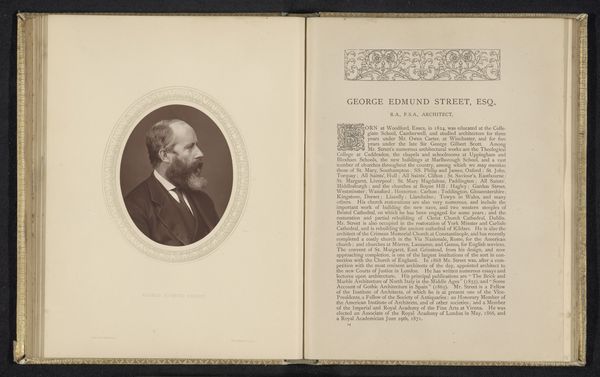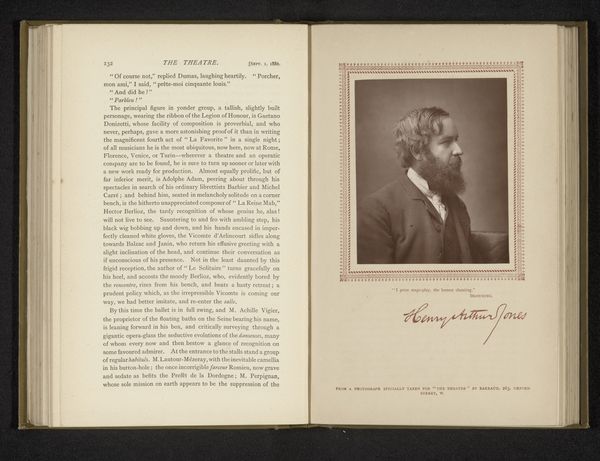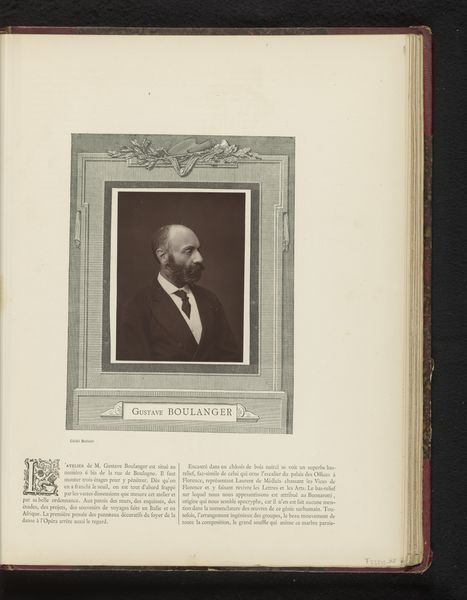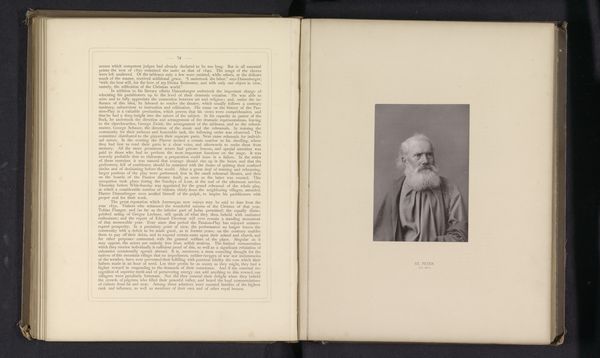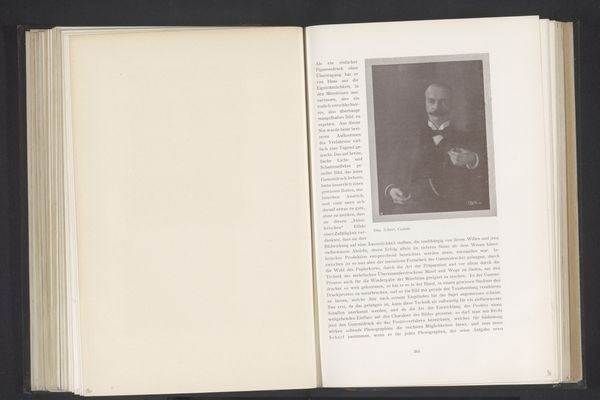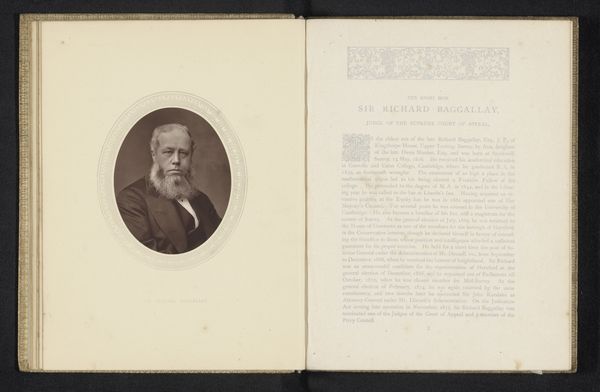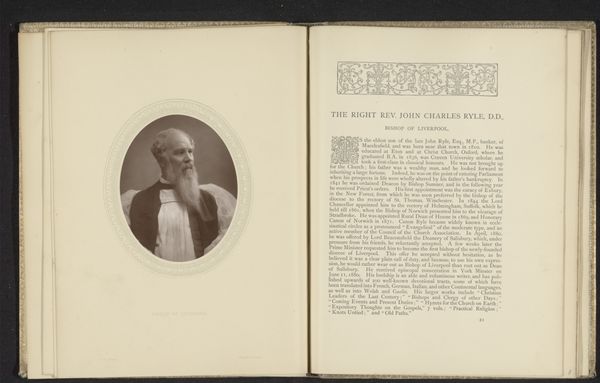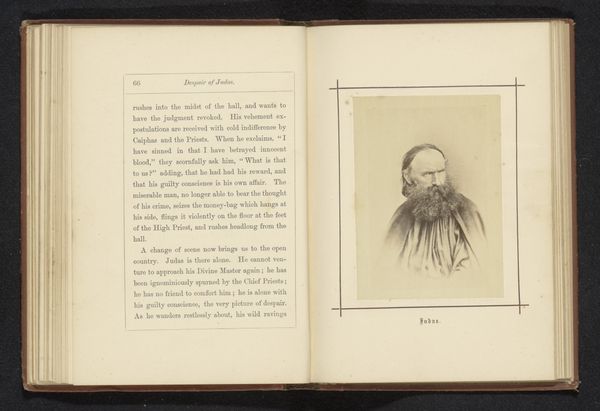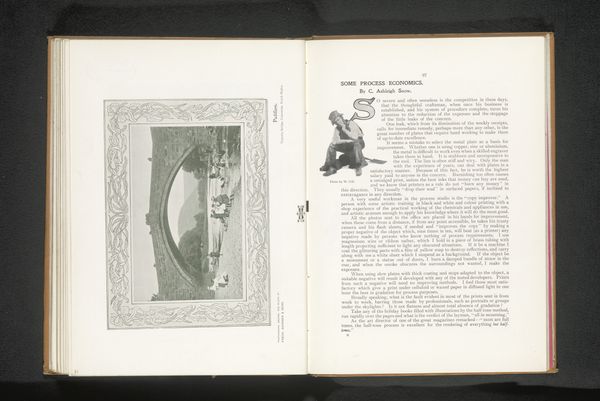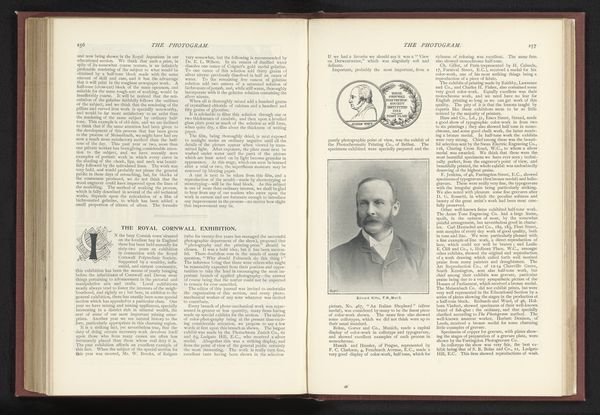
photography, gelatin-silver-print
#
portrait
#
script typeface
#
aged paper
#
script typography
#
hand drawn type
#
personal journal design
#
photography
#
personal sketchbook
#
hand-drawn typeface
#
gelatin-silver-print
#
thick font
#
handwritten font
#
historical font
Dimensions: height 110 mm, width 86 mm
Copyright: Rijks Museum: Open Domain
Curator: We’re looking at "Portret van Paul Gustave Robinet," a gelatin-silver print from before 1884. It's part of a bound volume, open to a page featuring this portrait. Editor: It’s striking! The ornate frame around the portrait is echoed in the stylized typography; there’s a real sense of visual identity crafted here. It feels almost like an icon. Curator: Absolutely. And think about Robinet himself; his dress, his pose. The photographic portrait served a particular function in 19th-century bourgeois society. To have your image captured and disseminated in this manner was a marker of status, an assertion of belonging and legitimacy. Who was allowed to be seen and remembered? Editor: Indeed, photography was revolutionary in how it could capture a likeness. Note how the style suggests a certain permanence, maybe even nobility, even through a newly emerging technology. The portrait's borders also include ornamentation. Is there meaning to this ornamentation? Curator: Very likely. Contextually, the choice of photographic medium is crucial, given photography's emerging status and implications for representation and memory. And the accompanying texts...these contextual elements framed the very identity and perception of Robinet. Editor: So the overall effect communicates belonging through recognizable cultural codes. I keep being drawn to that frame, too...it speaks of preservation and idealization, framing Robinet not just as an individual, but also as an idea. Curator: Exactly. The entire layout of this spread underscores the deliberate construction of reputation and legacy, and reminds us that visibility is always a socially mediated phenomenon. The past still has so much to tell us. Editor: Well said! And looking at the past through art always informs the present. A fresh reminder to explore cultural identity, permanence, and memory.
Comments
No comments
Be the first to comment and join the conversation on the ultimate creative platform.
